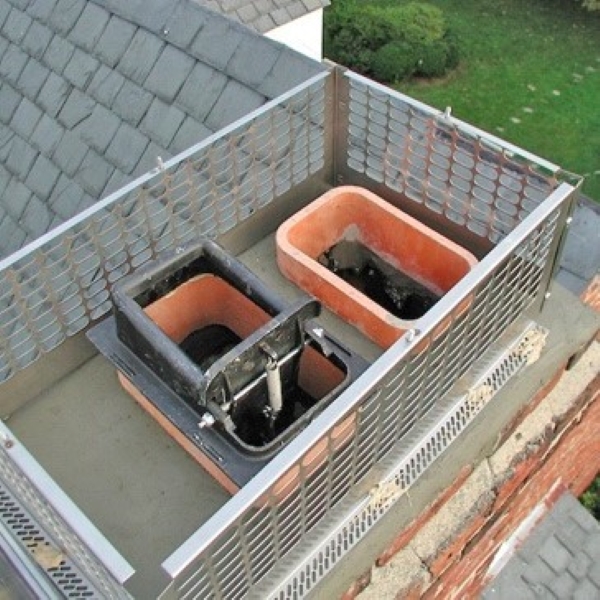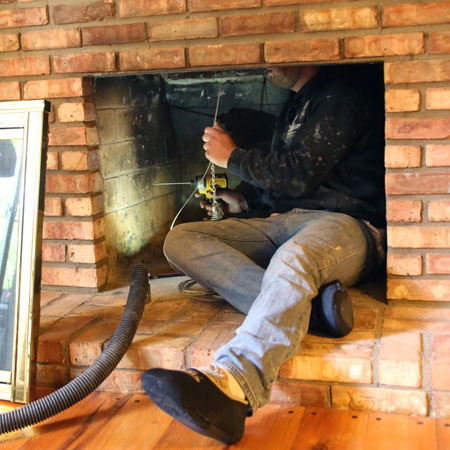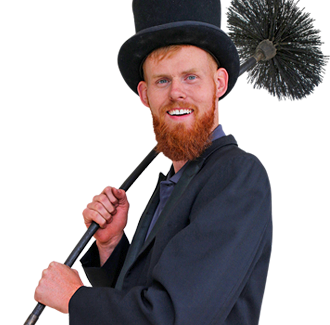The Critical Jobs of a Chimney Damper
With the winter season just around the corner, many homeowners are looking forward to enjoying their wood-burning fireplace. However, about 14% to 30% of the conditioned air can escape through gaps in the home, including the chimney damper that can increase your heating and cooling costs. Your chimney inspection can make sure your chimney damper is working correctly before you light the first fire of the season.
 Where is the Chimney Damper?
Where is the Chimney Damper?
The chimney damper or fireplace damper is a metal or cast-iron plate typically located in the chimney throat, directly above the firebox. It is operated by turning a rotary knob clockwise or pushing or lifting a metal rod to open the damper. Some fireplaces have a top-mount damper installed at the top of the chimney. Pulling a chain in the fireplace opens the damper.
What Does it Do?
The primary job of the fireplace damper is to regulate the airflow in the chimney when you’re using the fireplace and to prevent energy loss, moisture intrusion, and pests after the flames are out or the fireplace is closed for the season.
The Three Critical Jobs of the Chimney Damper
Helps start and maintain the fire: When the damper is open, it draws in the oxygen your fireplace needs to start and maintain the fire while providing a safe pathway for the smoke and fumes to exit your home. You can’t safely start a fire in the fireplace unless the damper is open entirely. Otherwise, smoke and carbon monoxide (CO) fumes will pour out of the fireplace and into your living area, which can lead to carbon monoxide poisoning. Carbon monoxide is a colorless, odorless, and tasteless gas that can be deadly when inhaled. Symptoms of CO poisoning include nausea, headache, dizziness, and confusion.
Controls the fire’s intensity: The damper is also used to control the fire’s intensity. Partially closing the damper, for example, reduces the oxygen flow for a longer-lasting, mellow fire. Conversely, if you want more heat, open the damper to increase the intensity.
Seals the fireplace: When the damper is closed, it should create an airtight seal that prevents the outdoor air from mixing with the conditioned air inside your home. The damper should be shut after the fire burns out or is extinguished and when you’re no longer using the fireplace. Doing so will keep your home warmer in the winter and cooler in the summer. It also prevents rain and snow from dripping in the fireplace and keeps out small animals and pests that like to climb in the chimney.
Common Fireplace Damper Problems
Creosote Build-Up: If you don’t clean the fireplace regularly, creosote build-up can affect the damper’s ability to open or close, especially when it hardens. The thick, crusty, and tarry material is also highly flammable and is very difficult to remove. If the damper doesn’t close, you will notice a draftier living space and higher energy bills. In addition, water leaks can damage the interior masonry, and pests can invade your living area through the fireplace.
Rusting/Warping: Chimney leaks and corrosive combustion gas residue that sticks to the damper, along with the intense fireplace heat, can cause the damper to rust or warp. The damper may be noisy or difficult to open, and it may not close completely, allowing air, moisture, and pests to seep through the gaps.
 Chimney Damper Repair
Chimney Damper Repair
Don’t use your fireplace with a faulty damper. If you’re damper isn’t working call the certified chimney technicians at Hudson Valley Chimney for expert chimney damper repair throughout the Hudson Valley region. Schedule an appointment today, and we’ll make sure your chimney and fireplace will be safe to operate when you’re ready to light the first fire of the season.








